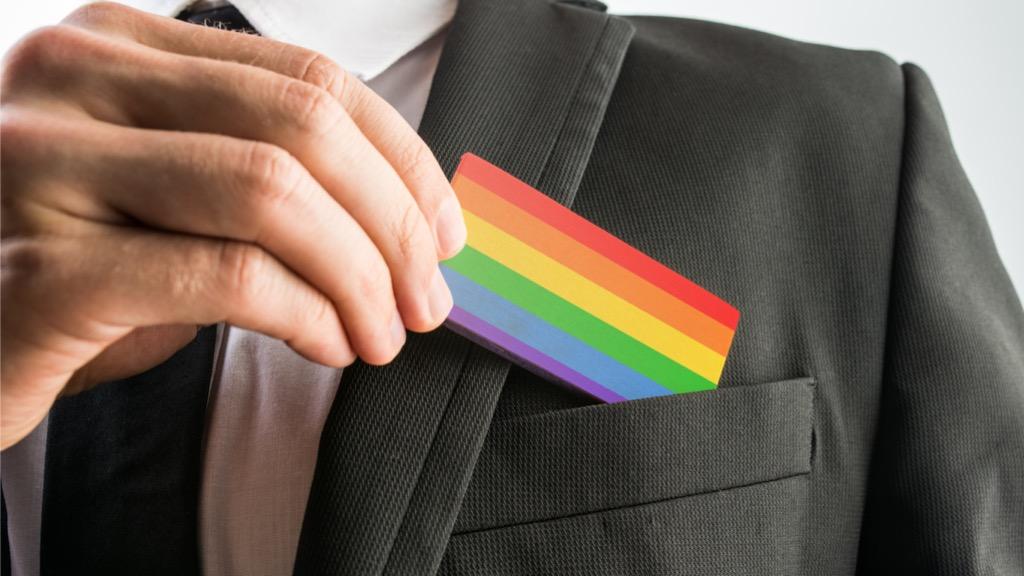Sexual Orientation, Gender Identity and Leadership

What do Apple, Dow Chemical and Land O’Lakes all have in common? All three of them are Fortune 500 companies and all three of them have openly gay CEOs (Tim Cook, James Fitterling and Beth Ford, respectively). These trailblazers are the first sexual-orientation minorities in Fortune 500 C-suites, and are all relatively recent. Cook was named CEO of Apple in 2011 but did not come out until 2014, and Fitterling and Ford (who were both out at the time) were both named CEO in 2018. Earlier, I wrote about research on leadership and gender as well as race. What does research say about the experiences of lesbian, gay, bisexual, transgender and queer (LGBTQ) leaders?
When people think about sexual orientation, it is difficult to disentangle the topic from beliefs about gender. You may remember from my post on “think manager, think male” that people typically automatically associate successful leadership with being a man, but interestingly this does not seem to be the case for gay men. In one study I conducted that compared what people thought of heterosexual men, heterosexual women, gay men and lesbian women, gay men were actually thought of as the least successful leaders [1]. Even though people typically prefer men over women as leaders, in my study they preferred both heterosexual women as well as lesbian women over gay male leaders. It seems that perhaps people actually “think manger, think heterosexual male.”
Why is this? As old-fashioned as it seems, this may be best explained by Freud’s inversion theory [2]. Freud suggested that gay men have similar personality traits and characteristics as heterosexual women, and lesbian women have similar personality traits and characteristics as heterosexual men. Today we understand that this is an overly simplistic (and frankly, offensive) understanding of sexual orientation and gender identity. Yet this malicious belief is still prevalent in today’s society; a lot of current research has found that people think gay and lesbian people demonstrate the qualities of their opposite-sex counterparts. In my study cited above, I found this to be true – even among people who identified as gay-friendly and had a lot of LGBTQ friends.
All of this suggests that when people think about gay male leaders, they think of them as having feminine qualities – which triggers “think manager, think male,” thus deeming them to be considered poor leaders. On the other hand, when people think about lesbian leaders, they think of these women as masculine – and therefore as good leaders. Therefore, although at first glance it may look like “think manager, think male” does not apply to gay male and lesbian leaders, it seems to still be present — albeit with a twist.
Research on gender identity and leaders, though limited, also seems to support this suggestion with regard to transgender people. A recent study measured perceptions of who was seen as a better leader: trans women (i.e., male-to-female transgender people) or trans men (i.e., female-to-male transgender people) [3]. Unsurprisingly, people preferred trans men as leaders over trans women. This study did not compare how transgender leaders are viewed in relation to heterosexual, gay or lesbian leaders, but once again there is a preference for masculinity in leadership.
The phenomenon of LGBTQ people as leaders is relatively recent (historically, societal acceptance of LGBTQ people, as fragile as it is, is also relatively recent). So it will be interesting to watch in the coming years to see how many more LGBTQ people are promoted to leadership roles (or how many leaders will come out as LGBTQ), as well as to see how our society reacts. It seems that as of now, these leaders are still being held to stereotypical gender norms. Perhaps, though, as LGBTQ people as leaders becomes more common, society will start to rethink beliefs about gender and leadership and begin to see things from a new perspective.
References:
[1] Salter, N. P., & Liberman, B. (2016). The role of sexual orientation and gender on leadership perceptions. In T. Köllen (Ed.) Sexual Orientation and Transgender Issues in Organizations: Global Perspectives on LGBT Workforce Diversity (pp. 429 - 449). New York: Springer.
[2] Freud, S. (1953). Three essays on the theory of sexuality. In J. Strachev (Ed. & Trans.), The standard edition of the complete psychological works of Sigmund Freud (Vol. 7, pp. 136–148). London: Hogarth Press (Original work published 1905).
[3] Warner, L.R., Poran, M., Kelly, C., Muqsit, N., & Spero, R. (2016, June). How perceptions of transracial identities relate to perceived authenticity of transgender identities. Poster presented the annual meeting of the Society for the Psychological Study of Social Issues. Minneapolis, MN, USA.


